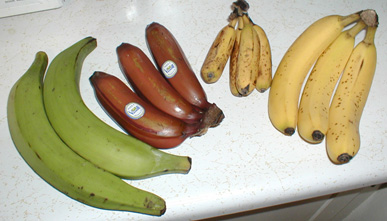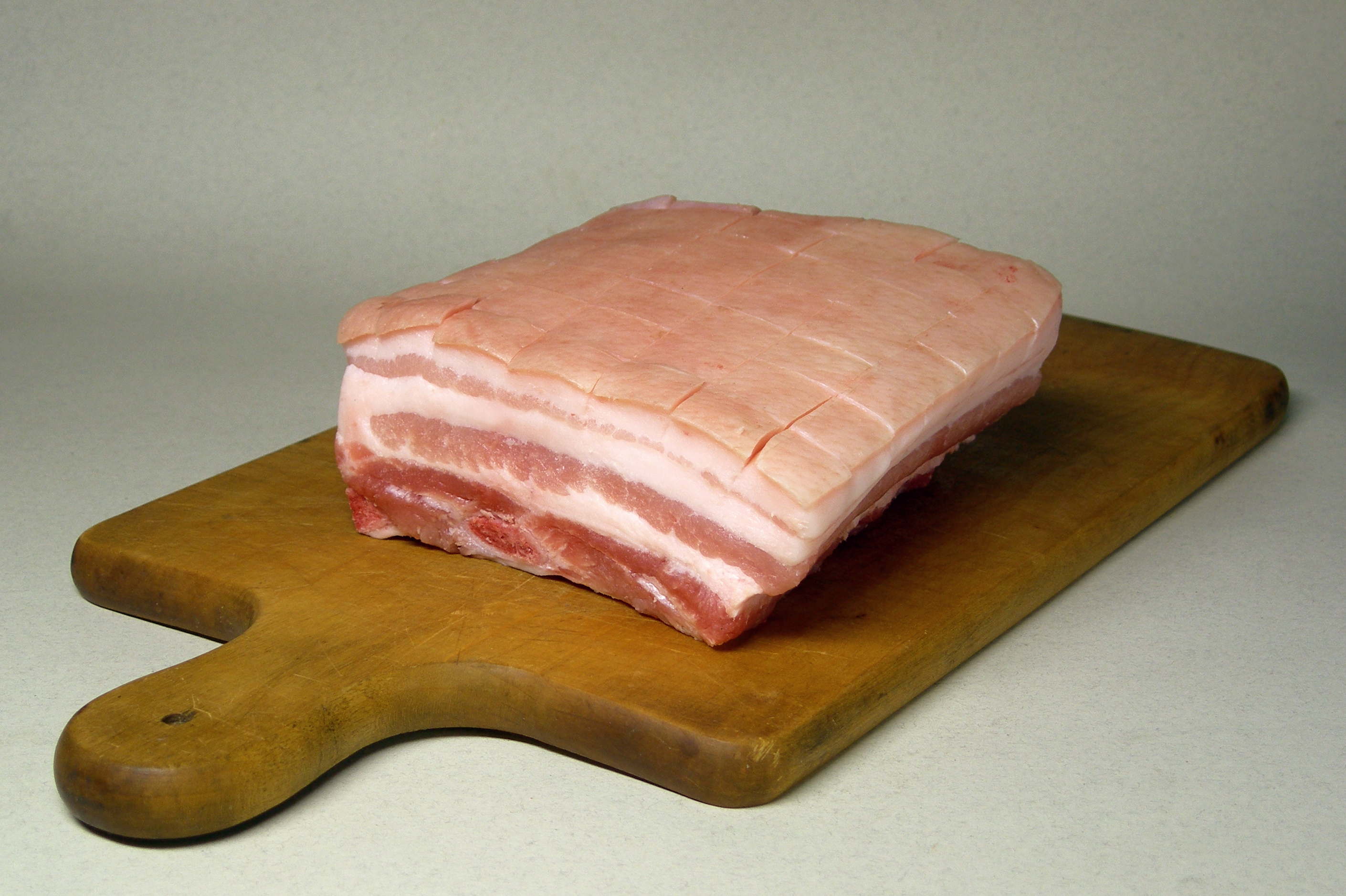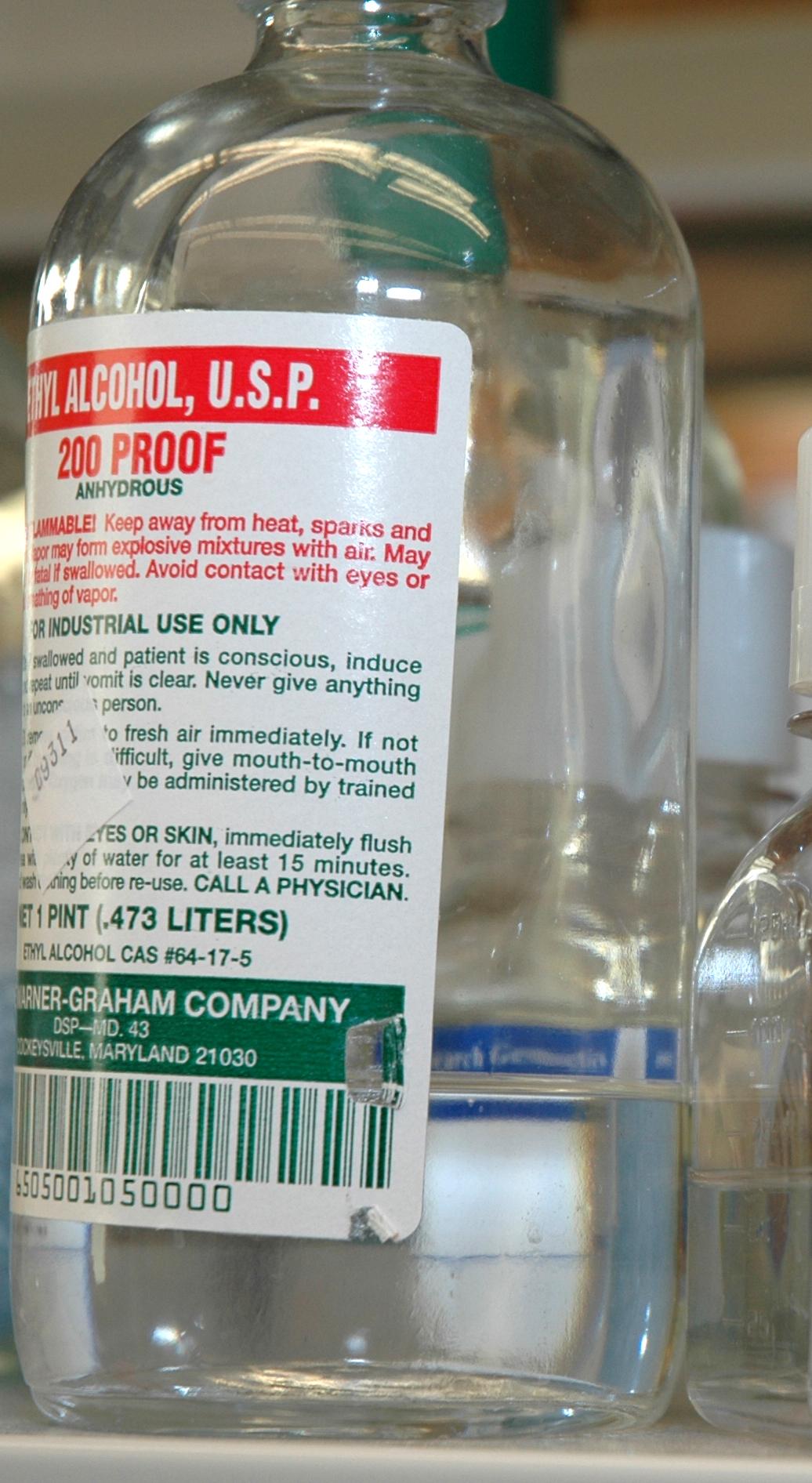|
Undecanol
Undecanol, also known by its IUPAC name 1-undecanol or undecan-1-ol, and by its trivial names undecyl alcohol and hendecanol, is a fatty alcohol. Undecanol is a colorless, water-insoluble liquid of melting point 19 °C and boiling point 243 °C. Industrial uses and production It has a floral citrus like odor, and a fatty taste and is used as a flavoring ingredient in foods. It is commonly produced by the reduction of undecanal, the analogous aldehyde. Natural occurrence 1-Undecanol is found naturally in many foods such as fruits (including apples and bananas), butter, eggs and cooked pork. Toxicity Undecanol can irritate the skin, eyes and lungs. Ingestion can be harmful, with the approximate toxicity of ethanol Ethanol (abbr. EtOH; also called ethyl alcohol, grain alcohol, drinking alcohol, or simply alcohol) is an organic compound. It is an alcohol with the chemical formula . Its formula can be also written as or (an ethyl group linked to a h .... Ref ... [...More Info...] [...Related Items...] OR: [Wikipedia] [Google] [Baidu] |
Ethanol
Ethanol (abbr. EtOH; also called ethyl alcohol, grain alcohol, drinking alcohol, or simply alcohol) is an organic compound. It is an alcohol with the chemical formula . Its formula can be also written as or (an ethyl group linked to a hydroxyl group). Ethanol is a volatile, flammable, colorless liquid with a characteristic wine-like odor and pungent taste. It is a psychoactive recreational drug, the active ingredient in alcoholic drinks. Ethanol is naturally produced by the fermentation process of sugars by yeasts or via petrochemical processes such as ethylene hydration. It has medical applications as an antiseptic and disinfectant. It is used as a chemical solvent and in the synthesis of organic compounds, and as a fuel source. Ethanol also can be dehydrated to make ethylene, an important chemical feedstock. As of 2006, world production of ethanol was , coming mostly from Brazil and the U.S. Etymology ''Ethanol'' is the systematic name defined by the Interna ... [...More Info...] [...Related Items...] OR: [Wikipedia] [Google] [Baidu] |
Diethyl Ether
Diethyl ether, or simply ether, is an organic compound in the ether class with the formula , sometimes abbreviated as (see Pseudoelement symbols). It is a colourless, highly volatile, sweet-smelling ("ethereal odour"), extremely flammable liquid. It is commonly used as a solvent in laboratories and as a starting fluid for some engines. It was formerly used as a general anesthetic, until non-flammable drugs were developed, such as halothane. It has been used as a recreational drug to cause intoxication. Production Most diethyl ether is produced as a byproduct of the vapor-phase hydration of ethylene to make ethanol. This process uses solid-supported phosphoric acid catalysts and can be adjusted to make more ether if the need arises. Vapor-phase dehydration of ethanol over some alumina catalysts can give diethyl ether yields of up to 95%. Diethyl ether can be prepared both in laboratories and on an industrial scale by the acid ether synthesis. Ethanol is mixed with a str ... [...More Info...] [...Related Items...] OR: [Wikipedia] [Google] [Baidu] |
IUPAC
The International Union of Pure and Applied Chemistry (IUPAC ) is an international federation of National Adhering Organizations working for the advancement of the chemical sciences, especially by developing nomenclature and terminology. It is a member of the International Science Council (ISC). IUPAC is registered in Zürich, Switzerland, and the administrative office, known as the "IUPAC Secretariat", is in Research Triangle Park, North Carolina, United States. This administrative office is headed by IUPAC's executive director, currently Lynn Soby. IUPAC was established in 1919 as the successor of the International Congress of Applied Chemistry for the advancement of chemistry. Its members, the National Adhering Organizations, can be national chemistry societies, national academies of sciences, or other bodies representing chemists. There are fifty-four National Adhering Organizations and three Associate National Adhering Organizations. IUPAC's Inter-divisional Committee ... [...More Info...] [...Related Items...] OR: [Wikipedia] [Google] [Baidu] |
Fatty Alcohol
Fatty alcohols (or long-chain alcohols) are usually high-molecular-weight, straight-chain primary alcohols, but can also range from as few as 4–6 carbons to as many as 22–26, derived from natural fats and oils. The precise chain length varies with the source. Some commercially important fatty alcohols are lauryl, stearyl, and oleyl alcohols. They are colourless oily liquids (for smaller carbon numbers) or waxy solids, although impure samples may appear yellow. Fatty alcohols usually have an even number of carbon atoms and a single alcohol group (–OH) attached to the terminal carbon. Some are unsaturated and some are branched. They are widely used in industry. As with fatty acids, they are often referred to generically by the number of carbon atoms in the molecule, such as "a C12 alcohol", that is an alcohol having 12 carbons, for example dodecanol. Production and occurrence Most fatty alcohols in nature are found as waxes which are esters of fatty acids and fatty alcoh ... [...More Info...] [...Related Items...] OR: [Wikipedia] [Google] [Baidu] |
Undecanal
Undecanal, also known as undecyl aldehyde, is an organic compound with the chemical formula C10H21CHO. It is an eleven-carbon aldehyde. A colourless, oily liquid, undecanal is a component of perfumes. Although it occurs naturally in citrus oils, it is produced commercially by hydroformylation of decene. It has been registered under the EU REACH Reach or REACH may refer to: Companies and organizations * Reach plc, formerly Trinity Mirror, large British newspaper, magazine, and digital publisher * Reach Canada, an NGO in Canada * Reach Limited, an Asia Pacific cable network company * ... scheme at >1000 tonnes by Oxea, which confirms the status as irritant.http://apps.echa.europa.eu/registered/data/dossiers/DISS-9d84f5d2-6b83-52c9-e044-00144f67d249/DISS-9d84f5d2-6b83-52c9-e044-00144f67d249_DISS-9d84f5d2-6b83-52c9-e044-00144f67d249.html References Fatty aldehydes Alkanals {{organic-compound-stub ... [...More Info...] [...Related Items...] OR: [Wikipedia] [Google] [Baidu] |
Apple
An apple is an edible fruit produced by an apple tree (''Malus domestica''). Apple trees are cultivated worldwide and are the most widely grown species in the genus '' Malus''. The tree originated in Central Asia, where its wild ancestor, '' Malus sieversii'', is still found today. Apples have been grown for thousands of years in Asia and Europe and were brought to North America by European colonists. Apples have religious and mythological significance in many cultures, including Norse, Greek, and European Christian tradition. Apples grown from seed tend to be very different from those of their parents, and the resultant fruit frequently lacks desired characteristics. Generally, apple cultivars are propagated by clonal grafting onto rootstocks. Apple trees grown without rootstocks tend to be larger and much slower to fruit after planting. Rootstocks are used to control the speed of growth and the size of the resulting tree, allowing for easier harvesting. There ... [...More Info...] [...Related Items...] OR: [Wikipedia] [Google] [Baidu] |
Banana
A banana is an elongated, edible fruit – botanically a berry (botany), berry – produced by several kinds of large herbaceous flowering plants in the genus ''Musa (genus), Musa''. In some countries, Cooking banana, bananas used for cooking may be called "plantains", distinguishing them from dessert bananas. The fruit is variable in size, color, and firmness, but is usually elongated and curved, with soft flesh rich in starch covered with a rind, which may be green, yellow, red, purple, or brown when ripe. The fruits grow upward in clusters near the top of the plant. Almost all modern edible seedless (Parthenocarpy, parthenocarp) bananas come from two wild species – ''Musa acuminata'' and ''Musa balbisiana''. The Binomial nomenclature, scientific names of most cultivated bananas are ''Musa acuminata'', ''Musa balbisiana'', and Musa × paradisiaca, ''Musa'' × ''paradisiaca'' for the hybrid ''Musa acuminata'' × ''M. balbisiana'', depending on their genome, ... [...More Info...] [...Related Items...] OR: [Wikipedia] [Google] [Baidu] |
Butter
Butter is a dairy product made from the fat and protein components of churned cream. It is a semi-solid emulsion at room temperature, consisting of approximately 80% butterfat. It is used at room temperature as a spread (food), spread, melted as a condiment, and used as a fat in baking, sauce-making, pan frying, and other cooking procedures. Most frequently made from cattle, cow's milk, butter can also be manufactured from the milk of other mammals, including Sheep milk, sheep, Goat milk, goats, Buffalo milk, buffalo, and Yak milk, yaks. It is made by churning (butter), churning milk or cream to separate the fat globules from the buttermilk. Dairy salt, Salt has been added to butter since antiquity to help to preserve it, particularly when being transported; salt may still play a preservation role but is less important today as the entire supply chain is usually refrigerated. In modern times salt may be added for its taste. Food colorings are sometimes added to butter. Kitchen r ... [...More Info...] [...Related Items...] OR: [Wikipedia] [Google] [Baidu] |
Egg (food)
Humans and human ancestors have scavenged and eaten animal eggs for millions of years. Humans in Southeast Asia had domesticated chickens and harvested their eggs for food by 1,500 BCE. The most widely consumed eggs are those of fowl, especially chickens. Eggs of other birds, including ostriches and other ratites, are eaten regularly but much less commonly than those of chickens. People may also eat the eggs of reptiles, amphibians, and fish. Fish eggs consumed as food are known as roe or caviar. Bird and reptile eggs consist of a protective eggshell, albumen ( egg white), and vitellus ( egg yolk), contained within various thin membranes. Egg yolks and whole eggs store significant amounts of protein and choline, and are widely used in cookery. Due to their protein content, the United States Department of Agriculture formerly categorized eggs as ''Meats'' within the Food Guide Pyramid (now MyPlate). Despite the nutritional value of eggs, there are some potential heal ... [...More Info...] [...Related Items...] OR: [Wikipedia] [Google] [Baidu] |
Pork
Pork is the culinary name for the meat of the domestic pig (''Sus domesticus''). It is the most commonly consumed meat worldwide, with evidence of pig husbandry dating back to 5000 BCE. Pork is eaten both freshly cooked and preserved; curing extends the shelf life of pork products. Ham, gammon, bacon, and sausage are examples of preserved pork. Charcuterie is the branch of cooking devoted to prepared meat products, many from pork. Pork is the most popular meat in the Western world, particularly in Central Europe. It is also very popular in East and Southeast Asia (Mainland Southeast Asia, Philippines, Singapore, and East Timor). The meat is highly prized in Asian cuisines, especially in Mainland China, for its fat content and texture. Some religions and cultures prohibit pork consumption, notably Islam and Judaism. History Pigs were domesticated in Mesopotamia around 13,000 BC. Charcuterie is the branch of cooking devoted to prepared meat products su ... [...More Info...] [...Related Items...] OR: [Wikipedia] [Google] [Baidu] |
Ethanol
Ethanol (abbr. EtOH; also called ethyl alcohol, grain alcohol, drinking alcohol, or simply alcohol) is an organic compound. It is an alcohol with the chemical formula . Its formula can be also written as or (an ethyl group linked to a hydroxyl group). Ethanol is a volatile, flammable, colorless liquid with a characteristic wine-like odor and pungent taste. It is a psychoactive recreational drug, the active ingredient in alcoholic drinks. Ethanol is naturally produced by the fermentation process of sugars by yeasts or via petrochemical processes such as ethylene hydration. It has medical applications as an antiseptic and disinfectant. It is used as a chemical solvent and in the synthesis of organic compounds, and as a fuel source. Ethanol also can be dehydrated to make ethylene, an important chemical feedstock. As of 2006, world production of ethanol was , coming mostly from Brazil and the U.S. Etymology ''Ethanol'' is the systematic name defined by the Interna ... [...More Info...] [...Related Items...] OR: [Wikipedia] [Google] [Baidu] |
Fatty Alcohols
Fatty alcohols (or long-chain alcohols) are usually high-molecular-weight, straight-chain primary alcohols, but can also range from as few as 4–6 carbons to as many as 22–26, derived from natural fats and oils. The precise chain length varies with the source. Some commercially important fatty alcohols are lauryl, stearyl, and oleyl alcohols. They are colourless oily liquids (for smaller carbon numbers) or waxy solids, although impure samples may appear yellow. Fatty alcohols usually have an even number of carbon atoms and a single alcohol group (–OH) attached to the terminal carbon. Some are unsaturated and some are branched. They are widely used in industry. As with fatty acids, they are often referred to generically by the number of carbon atoms in the molecule, such as "a C12 alcohol", that is an alcohol having 12 carbons, for example dodecanol. Production and occurrence Most fatty alcohols in nature are found as waxes which are esters of fatty acids and fatty alcoho ... [...More Info...] [...Related Items...] OR: [Wikipedia] [Google] [Baidu] |






